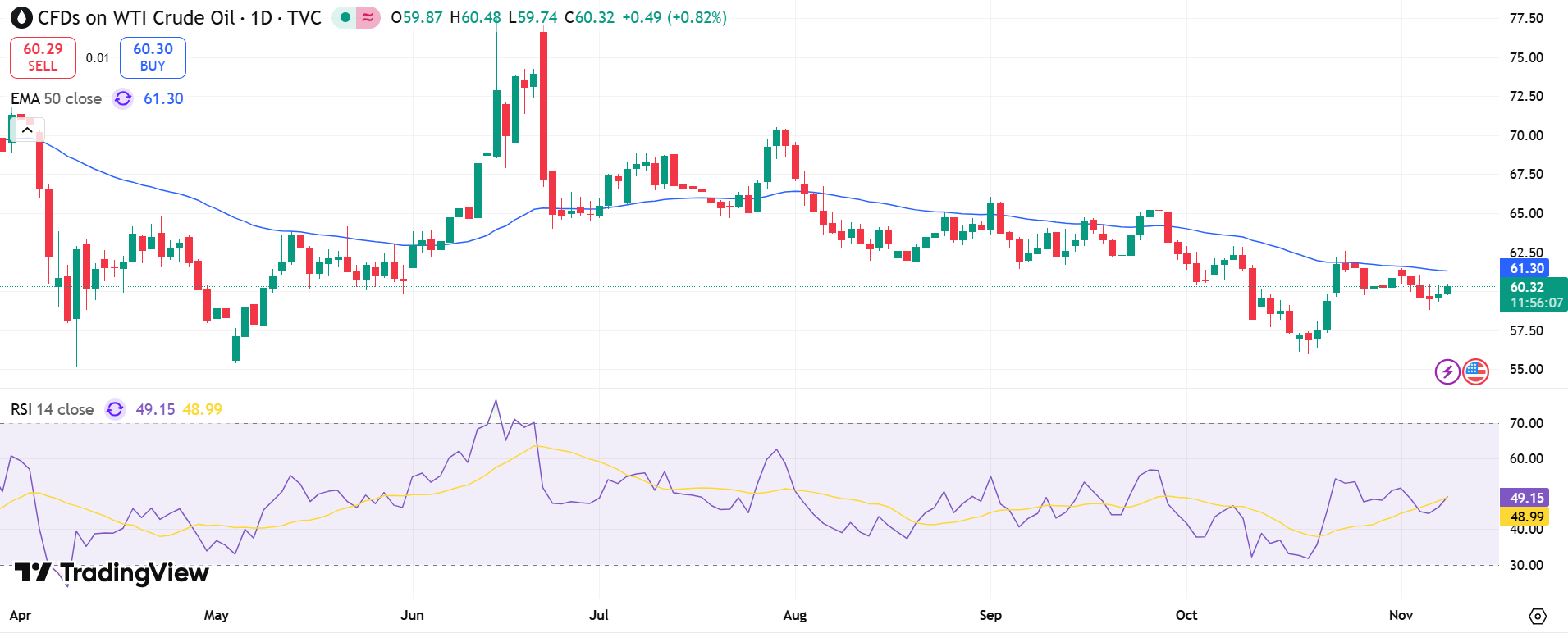Oil markets started the week on a positive note, buoyed by renewed optimism that the U.S. government shutdown could end soon. The potential resolution has boosted investor confidence and revived demand expectations for the world’s largest oil consumer.
Brent crude futures gained 0.79% to $64.13 per barrel, while U.S. West Texas Intermediate (WTI) advanced 0.89% to $60.28 by 09:16 GMT. The uptick follows two consecutive weeks of losses for both benchmarks, as traders weighed the impact of swelling inventories and uncertain demand.
The U.S. Senate voted on Sunday to advance a bipartisan bill aimed at reopening the government after a 40-day shutdown. The closure had stalled federal operations, disrupted air travel, and delayed crucial aid programs. Analysts say the progress restored risk appetite across global markets.
However, energy analysts warned of near-term turbulence in fuel consumption. Airlines canceled over 2,800 flights and delayed more than 10,200 on Sunday alone, the worst disruption since the shutdown began, dampening jet fuel demand temporarily.
Supply Glut Still Shadows Oil Outlook
Despite the positive sentiment, concerns over excess supply continue to pressure oil markets. Both Brent and WTI fell around 2% last week, marking their second straight weekly decline amid fears of a global surplus.
The Organization of the Petroleum Exporting Countries (OPEC+) recently agreed to slightly increase production in December but opted to pause additional hikes in the first quarter of 2026. This decision reflects the alliance’s cautious stance amid fluctuating demand signals.
In the United States, crude inventories are climbing steadily. Meanwhile, the volume of oil stored on ships in Asian waters has doubled in recent weeks, as Western sanctions continue to limit imports into China and India.
Key supply highlights:
- U.S. stockpiles show a steady weekly increase.
- Floating storage in Asia doubles amid weaker Chinese demand.
- OPEC+ maintains output restraint despite December’s minor rise.
Russia’s Energy Disruptions Add Tension

The oil market also faces fresh geopolitical uncertainty from Russia. The Tuapse refinery on the Black Sea halted fuel exports following a series of drone attacks earlier this month, according to industry sources and LSEG ship-tracking data.
Russian energy giant Lukoil is grappling with further setbacks as a U.S. sanctions deadline approaches on November 21, forcing international firms to cut business ties. A planned sale of Lukoil’s operations to Swiss trader Gunvor has also collapsed, deepening supply concerns.
Analysts at PVM noted a growing disconnect between the rising volume of crude stored at sea and the shrinking availability of refined Russian products, signaling potential volatility ahead.
For now, oil prices remain sensitive to both policy developments in Washington and evolving supply risks from Moscow — a dual narrative shaping the global energy market’s next move.


